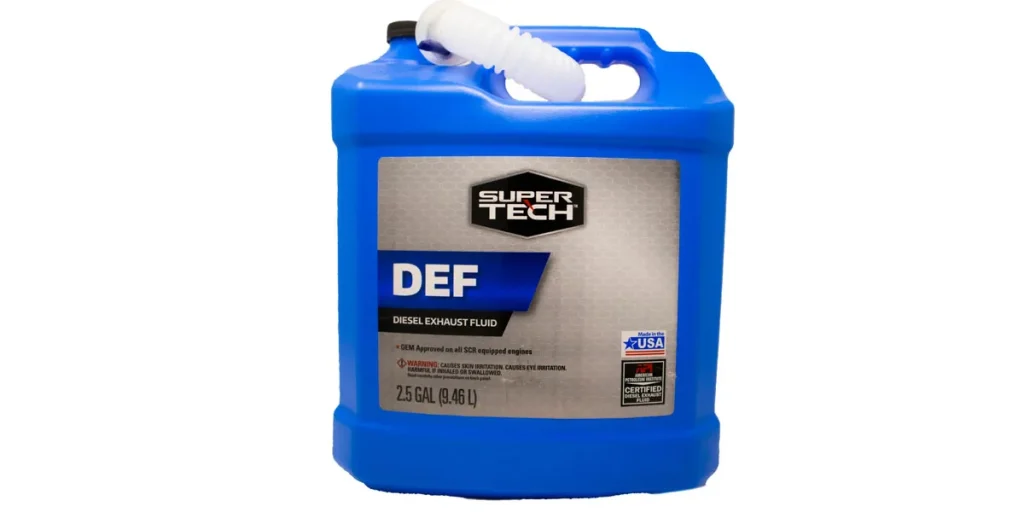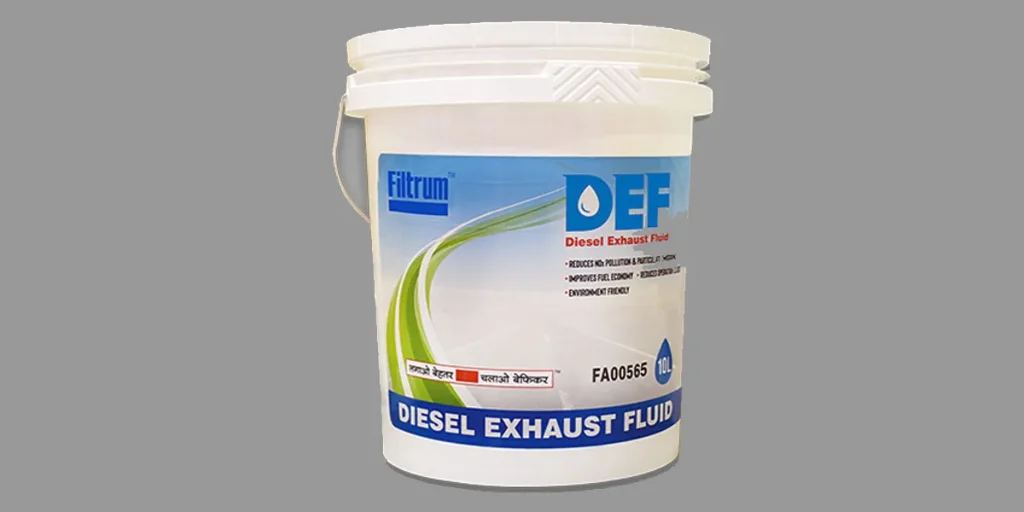Diesel exhaust fluid (DEF) weighs approximately 9 pounds per gallon. Understanding this is essential when handling or transporting DEF.
DEF is a non-toxic solution used in modern diesel engines to reduce harmful emissions and comply with environmental regulations.
Made of 32. 5% urea and 67. 5% deionized water, this fluid is integral to the Selective Catalytic Reduction (SCR) system that curbs nitrogen oxide (NOx) levels.
Proper storage and management are critical, as DEF is temperature-sensitive and has a shelf life that users must consider.
Trucks and agriculture equipment frequently require DEF to maintain emissions standards, emphasizing the need for accessible knowledge on storage, longevity, and weight for effective use.
As regulations on emissions tighten, the use of DEF continues to grow in the automotive and agricultural industries.
The Basics Of Def
Understanding the basics of DEF is crucial for many industries today. DEF, or Diesel Exhaust Fluid, plays a pivotal role in keeping our air cleaner.
So, what exactly is this substance, and how does it interact with diesel engines to reduce harmful emissions? Let’s dive into the specifics to uncover the fundamentals of DEF.
What Is DEF?
DEF is a non-toxic liquid used in modern diesel engines. It helps reduce the amount of nitrogen oxide (NOx) that diesel engines emit.
DEF is a key element in selective catalytic reduction (SCR) systems, which many diesel-powered vehicles use to meet environmental regulations.
Composition And Properties
Let’s take a closer look at what DEF is made from and its characteristics:
Composition:
- Def is 32.5% urea.
- The remaining 67.5% is deionized water.
Properties:
| Property | Description |
|---|---|
| Color | Clear |
| Odor | Slight ammonia |
| Boiling Point | Higher than water |
| Freezing Point | -11°C (12°F) |
| Shelf Life | Up to 2 years |
DEF plays a vital role in reducing harmful emissions from diesel engines. Its simple composition ensures that it can effectively convert NOx into harmless nitrogen and water.
This transformation occurs when DEF is injected into the exhaust stream of diesel vehicles. With the use of DEF, diesel engines can meet strict environmental standards without sacrificing performance.
Measuring Def Weight

Understanding how much DEF, or Diesel Exhaust Fluid, weighs is crucial. It ensures the proper handling and storage of this important solution.
To manage DEF effectively, knowing its weight by volume is a key factor.
Volume Vs. Weight
DEF is sold by volume, but its weight is important for transport and storage. Each liter of DEF has a specific weight.
This depends on temperature and purity. Operators must consider both metrics for accurate DEF management.
- Density: The DEF density is about 9 lbs/gallon.
- Volume-to-Weight Conversion: Easily convert volume to weight using the DEF density.
Standard Weights For Def
DEF has a consistent weight that is recognized across the industry. The weight changes slightly with temperature.
| Temperature (°F) | Weight Per Gallon |
|---|---|
| 32 | 9.1 lbs |
| 77 | 9.0 lbs |
| 100 | 8.9 lbs |
Note: Always use a DEF-weight chart for accuracy.
Understanding DEF’s weight helps in logistics and compliance. It ensures efficient use and maintenance of DEF. Key factors include temperature and DEF’s standard weights.
Factors Affecting Def Weight

Understanding the variability of Diesel Exhaust Fluid (DEF) weight is crucial for proper handling and storage.
Several factors come into play, influencing how much a given volume of DEF will weigh, potentially affecting logistics and inventory processes for businesses and consumers alike.
Temperature Variations
Like many liquids, DEF expands and contracts with temperature changes. This alters its weight per unit volume. For instance:
- Warmer temperatures lead to DEF expansion, resulting in a lighter weight.
- Colder temperatures cause DEF to contract, making it weigh more.
This means that DEF stored in fluctuating climates can differ in weight from the stated values.
Concentration Levels
The concentration of urea in DEF directly affects its weight:
| Concentration | Weight Impact |
|---|---|
| High urea concentration | Increases DEF weight |
| Low urea concentration | Decreases DEF weight |
Accuracy in urea content ensures consistent DEF quality and weight, vital for adherence to emission standards.
Calculating Def Usage And Weight
Diesel Exhaust Fluid (DEF) is crucial for modern diesel engines. It helps reduce emissions. Truckers and fleet managers often calculate DEF to manage costs and meet regulations.
Understanding how to find DEF consumption and its impact on weight is vital. It ensures compliance and optimal vehicle performance.
Estimating Def Consumption
To estimate DEF use, monitor your fuel consumption. On average, DEF usage is about 2-3% of diesel use.
Thus, for every 100 gallons of diesel, expect to use 2-3 gallons of DEF. Keep in mind, driving conditions and vehicle efficiency can change this ratio.
Use simple math to calculate:
- Total Diesel Used (Gallons) x DEF Ratio (Percentage) = DEF Needed (Gallons)
Impact On Total Vehicle Weight
DEF has a weight that can affect your vehicle’s total weight. One gallon of DEF weighs about 9 pounds.
For a truck carrying 20 gallons of DEF, that’s an extra 180 pounds to account for. This weight impacts fuel efficiency and load management.
| DEF Volume (Gallons) | DEF Weight (Pounds) |
|---|---|
| 10 | 90 |
| 20 | 180 |
| 30 | 270 |
Keep track of DEF levels. Plan your load and fuel stops accordingly. This ensures you stay within legal weight limits. It also avoids unnecessary stops for DEF top-ups.
Practical Considerations For Def Handling
Handling Diesel Exhaust Fluid (DEF) requires practical knowledge and a keen eye for detail. DEF is a non-hazardous solution, but its purity is crucial to function correctly.
Understanding its weight is essential for transport and storage. Let’s explore how to manage DEF effectively.
Storage Solutions
Proper storage is key to maintaining DEF quality. Here’s what to consider:
- Temperature: DEF freezes at 12°F (-11°C). Use insulated tanks to prevent freezing.
- Material: Store DEF in containers of stainless steel or high-density polyethylene.
- Shelf Life: Keep in a cool, dry area for a shelf life of up to one year.
Transportation And Regulations
Transporting DEF means following rules to ensure safety and purity:
- Weight Limits: Check vehicle weight restrictions, including DEF.
- Labeling: Mark containers with proper DEF labels for identification.
- Regulations: Comply with DOT and EPA standards for transport.
Managing DEF involves understanding its characteristics, weight considerations, and regulatory requirements.
Proper handling ensures environmental safety and engine performance.
FAQs About the Weight of Diesel Exhaust Fluid (DEF)
What Is The Weight Of Def Per Gallon?
Diesel Exhaust Fluid (DEF) weighs approximately 9 pounds per gallon.
This weight is consistent due to DEF’s standardized solution of 32. 5% urea mixed with 67. 5% deionized water.
How Much Does A Def Tote Weigh?
A DEF tote typically holds 275 or 330 gallons. So, multiplying by the DEF’s weight per gallon, a full 275-gallon tote would weigh about 2,475 pounds, while a 330-gallon tote would weigh around 2,970 pounds.
Can Def Freeze? What’s Its Impact?
Yes, DEF can freeze at 12°F (-11°C). While freezing does not harm the quality of DEF, it expands by approximately 7%, requiring containers to have extra space to accommodate this expansion and prevent damage.
What Affects Def’s Shelf Life?
DEF’s shelf life is influenced by temperature and exposure to sunlight.
Ideally, DEF should be stored in a cool, dry place out of direct sunlight. High temperatures or UV exposure can degrade its quality over time.
Conclusion
Understanding the weight of DEF is crucial for proper handling and transportation. This article has highlighted the specific gravity and typical weights per gallon to guide your calculations.
Accurate knowledge ensures compliance with regulations and optimizes your vehicle’s performance. Stay informed and handle DEF with confidence.
Resources:
https://www.mcphersonoil.com/you-need-to-know-about-def/
